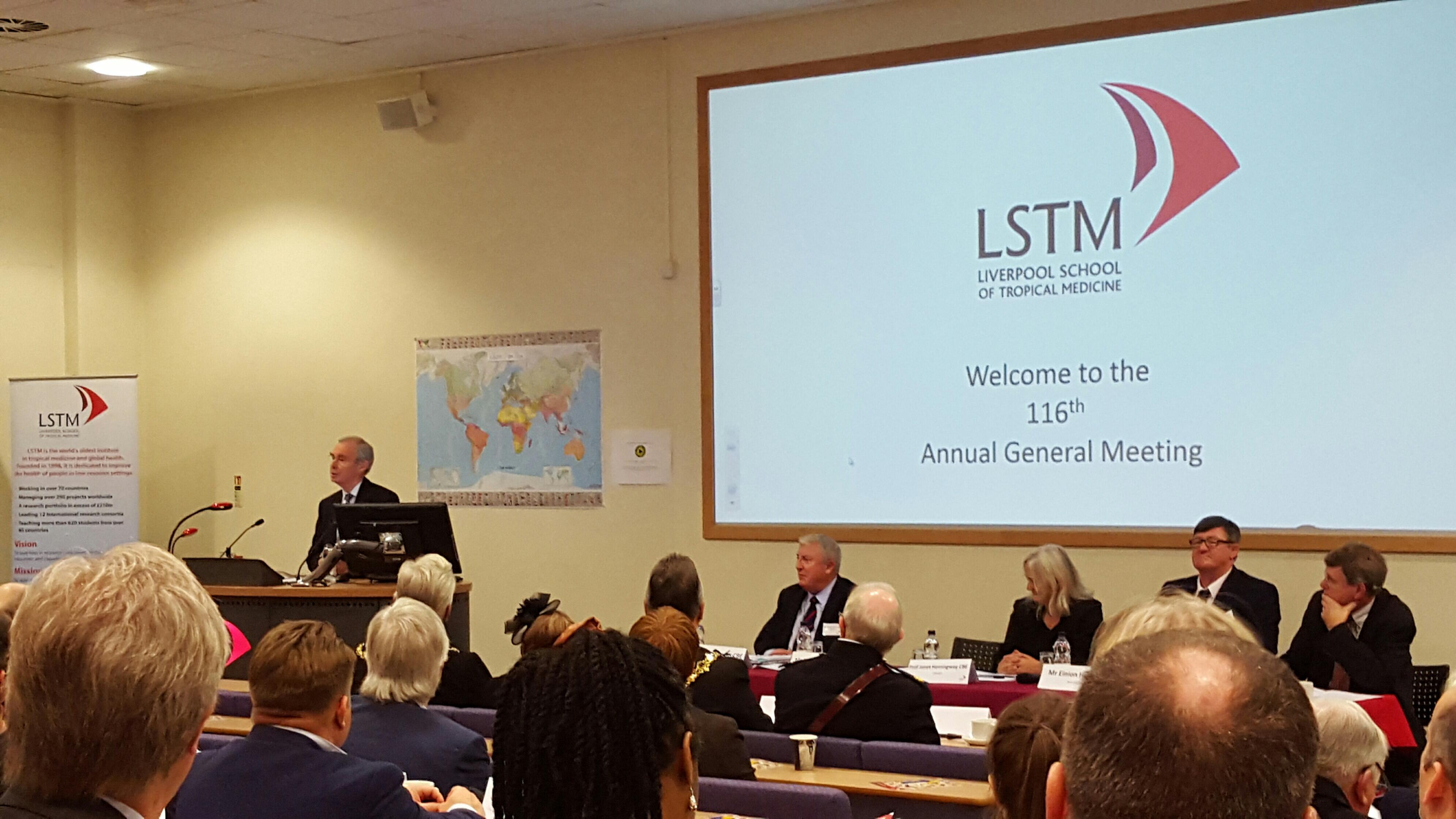
LSTM’s 116th Annual General Meeting (AGM) has taken place. Chaired by LSTM’s President Sir Richard Evans CBE, the LSTM’s vice-presidents, the Board of Trustees and Members along with staff and invited guests came together to celebrate the achievements of the last 12 months; vote on a number of governance issues; adopt the Annual Report and Financial Statements for the academic and financial year 2014 - 2015 and discuss the next phase in LSTM’s future.
During the meeting Board of Trustees chairman, James Ross OBE, welcomed the audience and made reference to LSTM’s new annual report, which he described as: “a beautifully presented and interesting read”. He drew from its content and made reference to LSTM appearing in the REF2014 rankings under its own name for the first time after being awarded HEI status as it was ranked 6th out of 128 institutions. This he said was: “a remarkable achievement, due to the internationally renowned expertise of the people who make up LSTM.”
LSTM’s Director, Professor Janet Hemingway CBE, paid tribute to the late Professor Herbert Gilles, a former Director of LSTM who died earlier this year, talking about how keen he had been on her setting targets to move LSTM forward when she took up the position of Director. She then went on to talk about the continued expansion of LSTM’s estate most notably the recent announcement of new Life Sciences Accelerator Building in partnership with the Royal Liverpool and Broadgreen University Hospital Trust.
Members then officially ratified the 2014/15 Annual Report and Financial Statements – both are available here.
Following the formal part of the meeting Professor Shabbar Jaffar, Head of the Department of International Public Health, gave a presentation to all present entitled: HIV in Africa: What are the global health research priorities? After the presentation members and guests were given a tour, including a demonstration of a range of diagnostic tools, used both in laboratory and field settings as well as field tools designed by LSTM and collaborators to measure the quality of insecticides used in indoor residual spraying programmes and to treat bed nets.